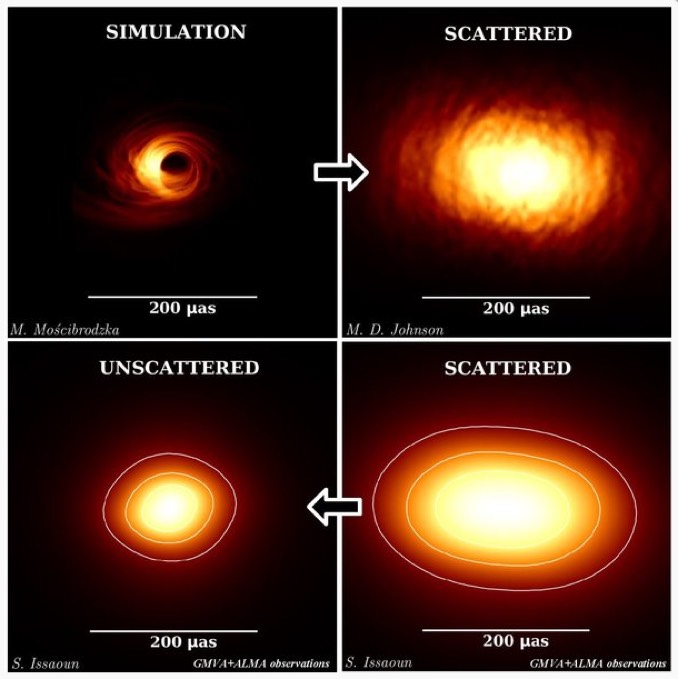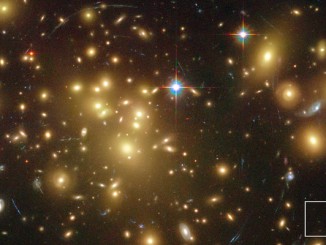
Intervening clouds of hot gas have long prevented astronomers from getting a clear look at the region around the supermassive black hole near the core of the Milky Way. But now, using the Atacama Large Millimeter/submillimeter Array in concert with other radio telescopes around the world, researchers have seen signs of what may be a jet coincidentally aimed almost directly at Earth.
Using very long baseline interferometry, which combines data from many instruments to form a virtual telescope the size of Earth, the researchers were able to map the properties of the light scattering that prevents a sharp view of the black hole, known as Sgr A*. Subtracting those scattering effects has allowed them to produce the first image of the region surrounding the 4-million-solar-mass body.
The bulk of Sgr A*’s radio emissions are coming from an extremely focused source measuring just one 300 millionth of a degree across as viewed from Earth.
“This may indicate that the radio emission is produced in a disk of in-falling gas rather than by a radio jet,” said Sara Issaoun, a graduate student at the Radboud University Nijmegen in the Netherlands. “However, that would make Sgr A* an exception compared to other radio emitting black holes. The alternative could be that the radio jet is pointing almost at us.”
Heino Falcke, professor of radio astronomy at Radboud University and Issaoun’s PhD supervisor, was initially skeptical but data from the European Southern Observatory’s Very Large Telescope, generated with a different technique, led to a similar conclusion. “Maybe this is true after all and we are looking at this beast from a very special vantage point,” Falcke said.
Sgr A* is the nearest supermassive black hole to Earth. Still, it is so far away – about 26,000 light years – its apparent size in our sky spans less than 100 millionth of a degree. To put that in perspective, that is roughly the size of a tennis ball on the Moon as seen from Earth.
Supermassive black holes appear to be common features of galactic cores, generating tremendous gravity that sucks in surrounding matter. Some of that material ends up in a rotating disk before spiralling into the hole while some is expelled in opposite directions in two relatively narrow beams, or jets, at extremely high velocities.
“Whether the radio emission seen from SgrA* originates from a symmetrical underlying structure, or is intrinsically asymmetric is a matter of intense discussion,” said Thomas Krichbaum, a member of the research team.



